There are 300 different woodpeckers species, and out of the roughly 22 are known to be occurring in the United States. There are eleven species of woodpeckers that have been sighted in Michigan, even though only nine are common inhabitants.
Forest marshes, pine woods, suburban areas, apple orchards, and other places are common habitats for woodpeckers in Michigan. Due to its twin peninsula layout and coastline on several Great Lakes, Michigan has a distinct ecology compared to many other states.
The Great Lake state of Michigan boasts a remarkably rich avian population, with over 450 species of birds. With two peninsulas holding lakes, flat terrain, and hilly sections, this state offers a diverse range of settings that make it an appealing home for birds.
Today, we’ll discuss the many varieties of woodpeckers found in Michigan, and there are quite a few.
Hairy and downy woodpeckers (also known for their remarkable likeness) are two of the most frequent Michigan woodpeckers, and they may be seen on woodland paths and swampland during the coldest months.
| Image | Name |
|---|---|
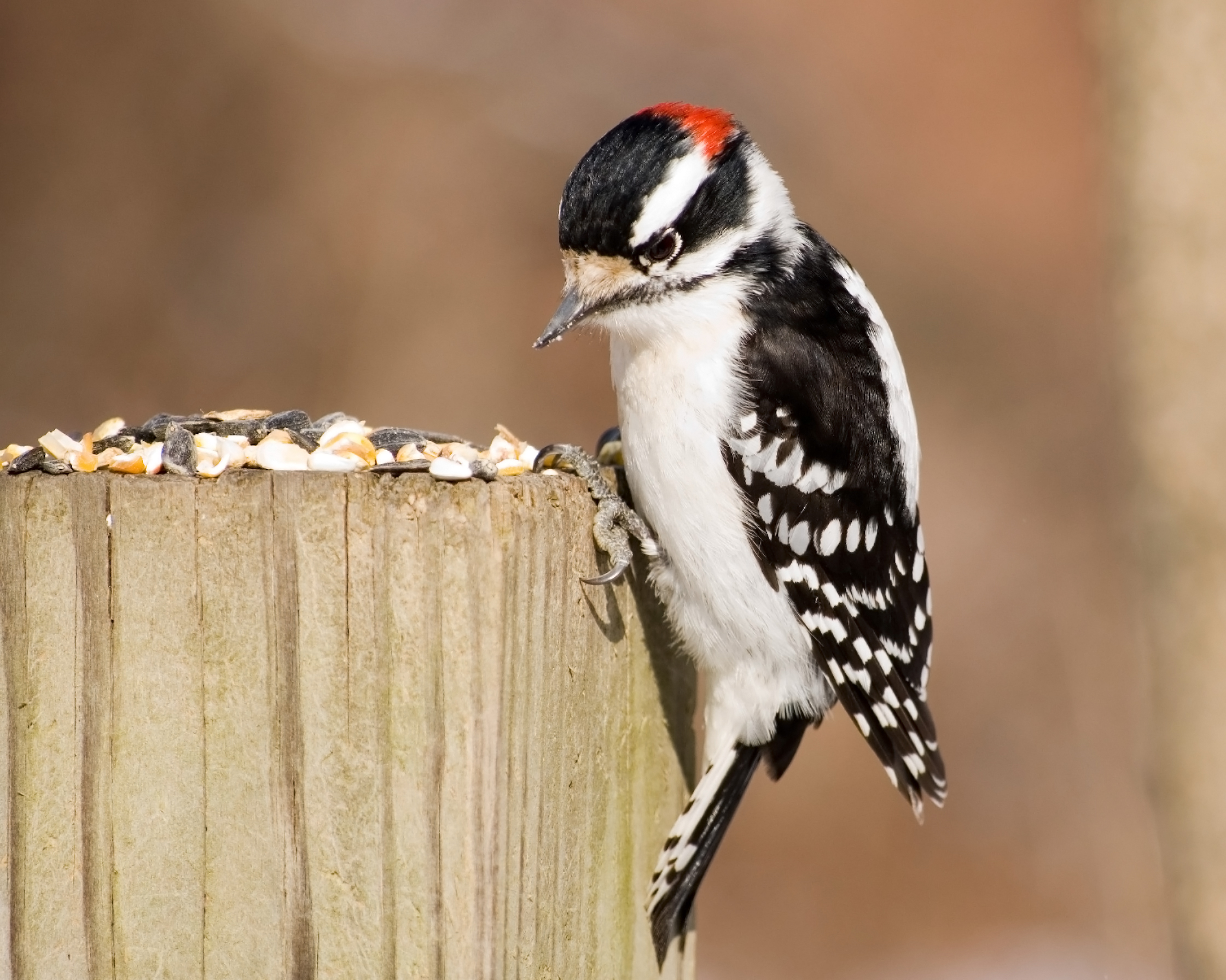 | Downy Woodpecker |
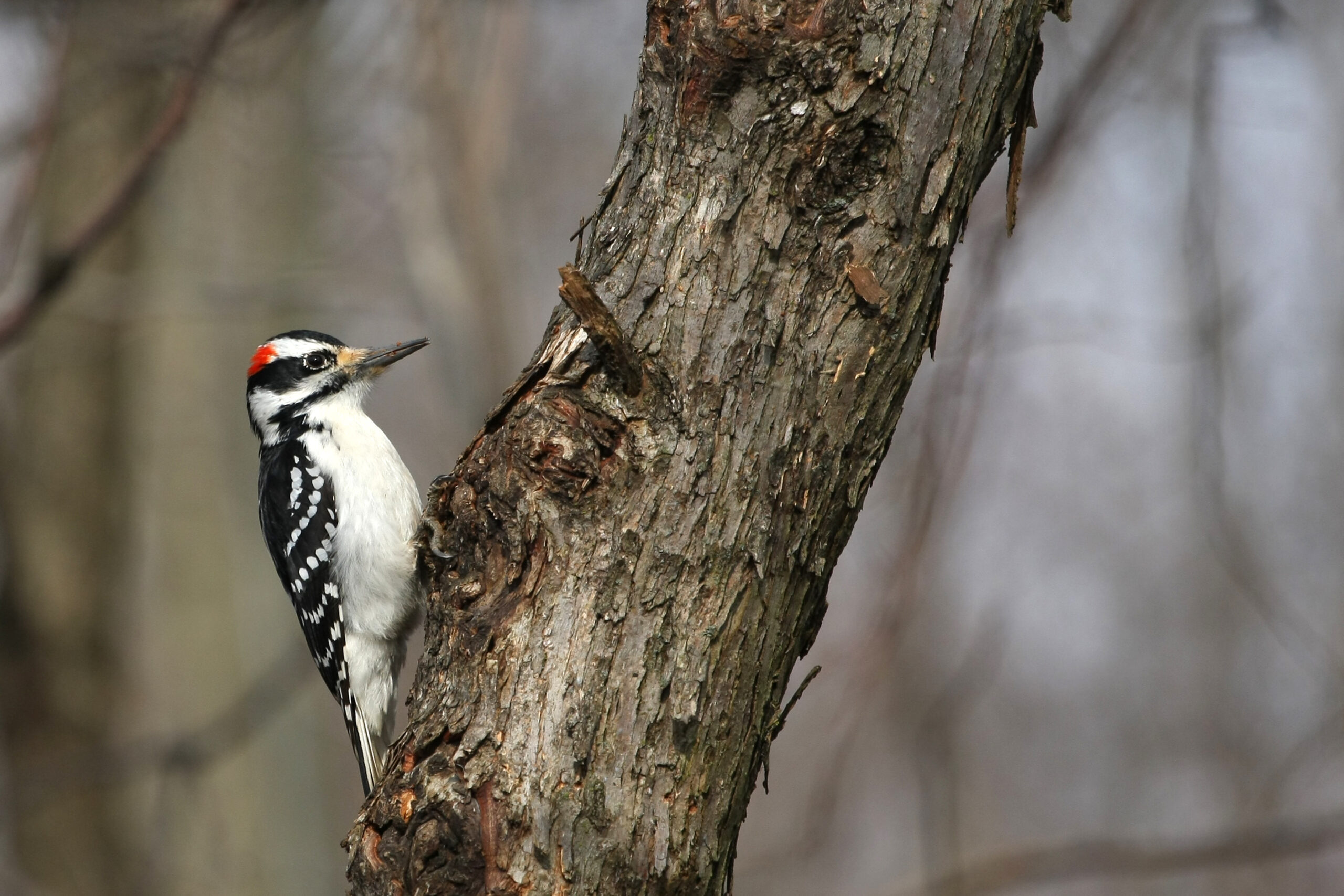 | Hairy Woodpecker |
 | Red-Bellied Woodpecker |
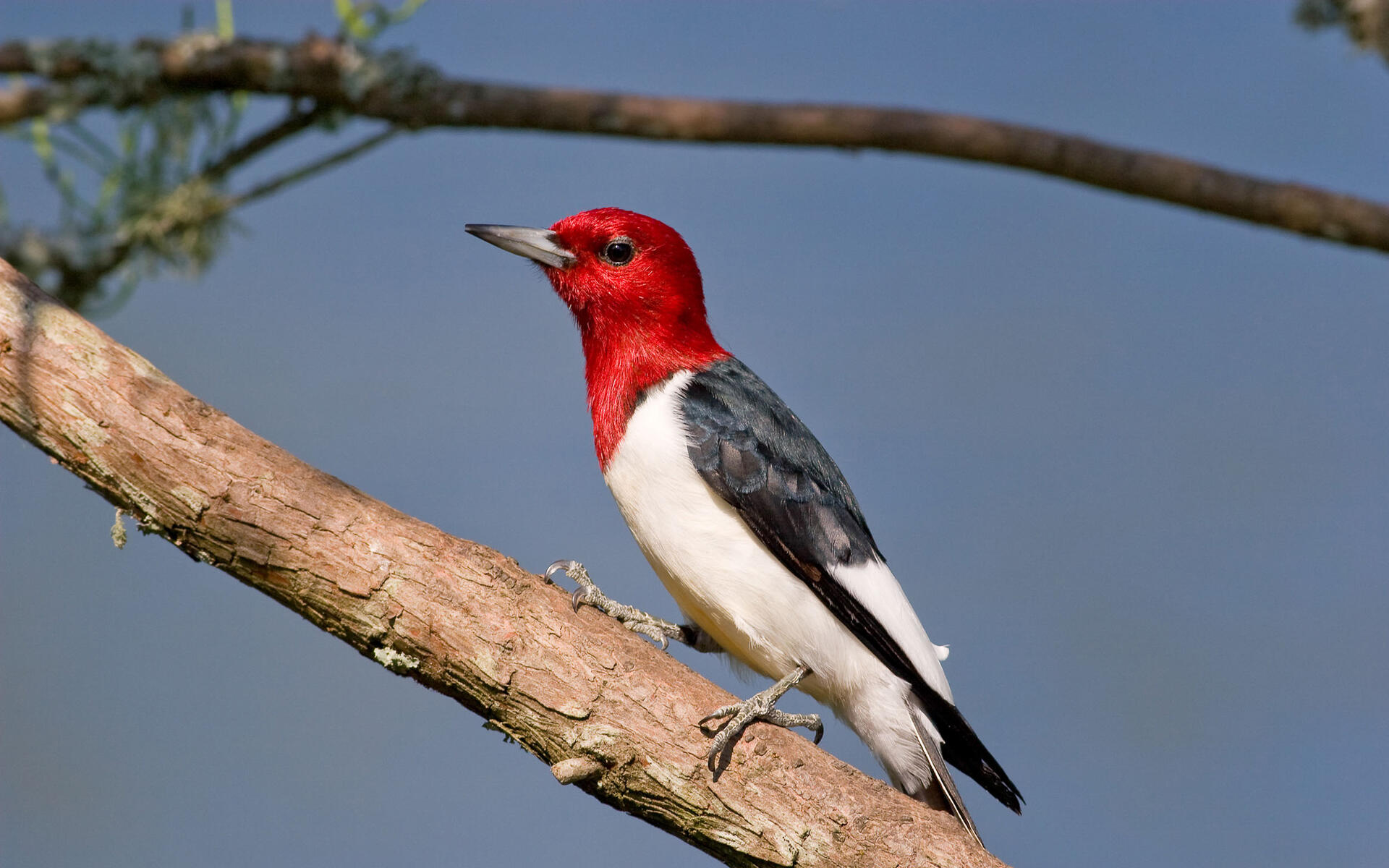 | Red-Headed Woodpecker |
 | Pileated Woodpecker |
 | Northern Flicker |
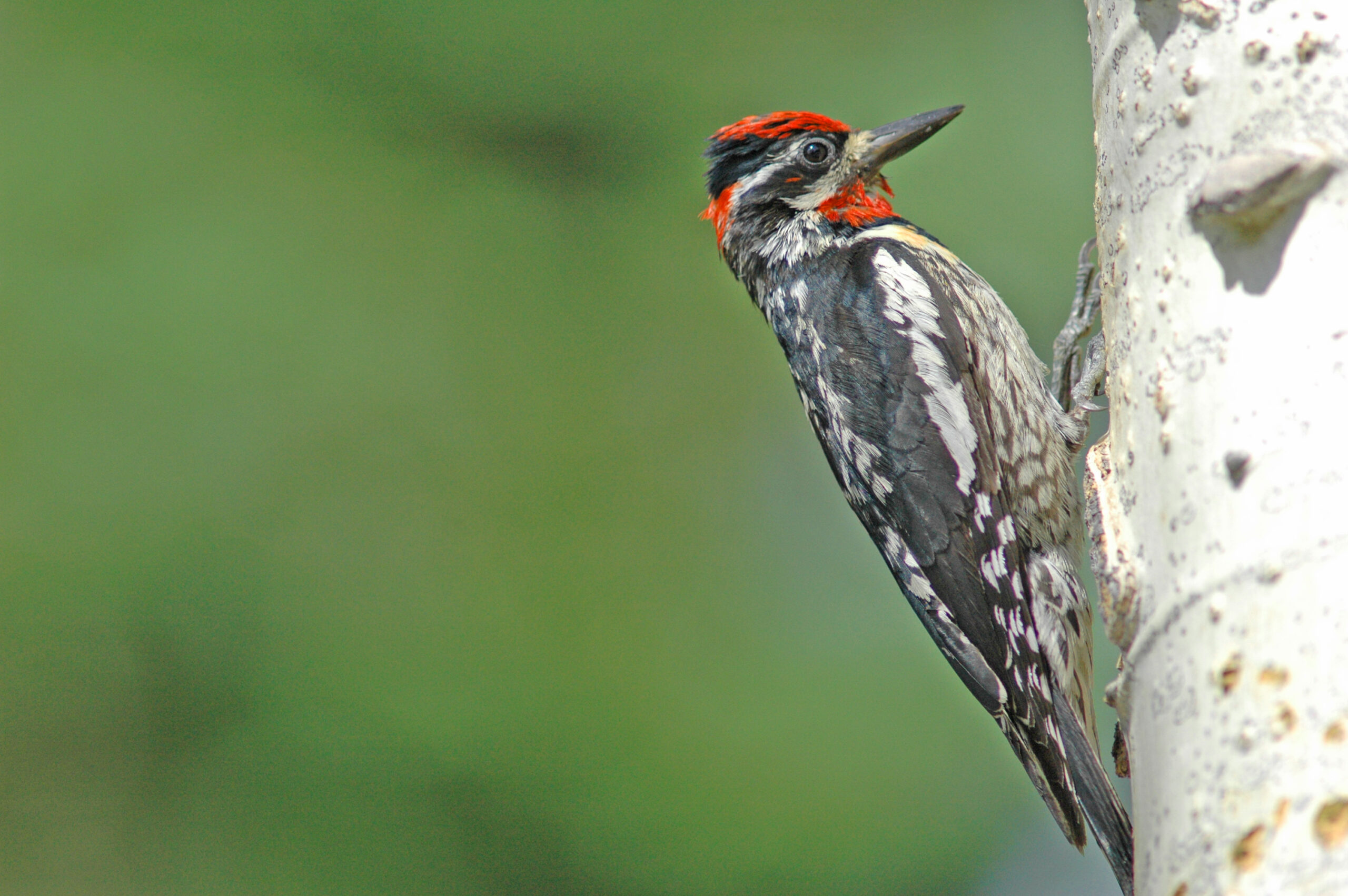 | Yellow-Bellied Sapsucker |
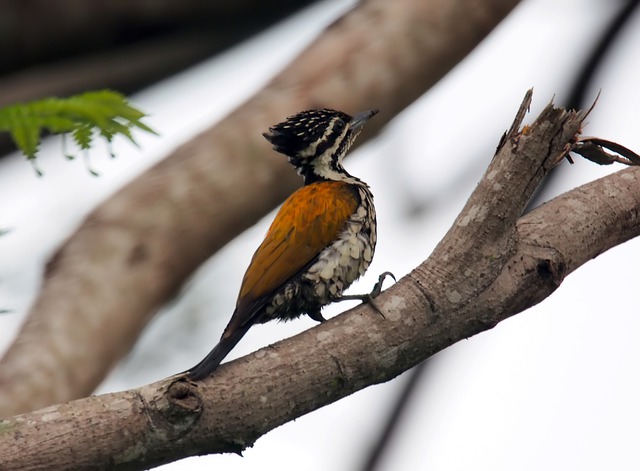 | Black-Backed Woodpecker |
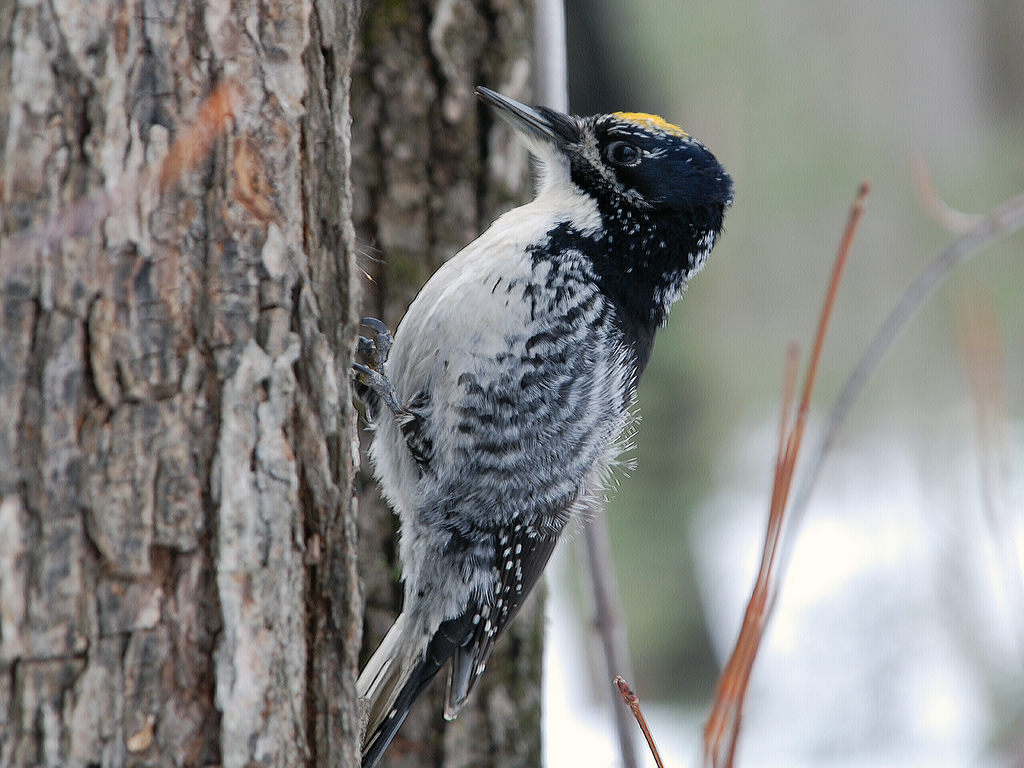 | American Three-toed Woodpecker |
 | Lewis's Woodpecker |
Types of Woodpeckers in Michigan
1. Downy Woodpecker

Downy Woodpeckers have a broad white stripe down their backs and medium-length black wings with a checkerboard pattern of white dots beginning just below the shoulder that resembles zebra stripes. They have tiny, black tails that are white underside and a pristine white belly and breast.
These birds have white faces with a black mustache line, a black ‘bandit’ mask that extends to the rear of the head, and a black crown that ends in a red patch on males but does not on females. These birds have black beaks that are straight and modest in length.
Length
The length of these birds ranges from 5.5 to 6.7 inches, with wingspans of 9.8 to 11.8 inches.
Food & Habitat
Downy Woodpeckers are the tiniest of all North American woodpeckers, and they may be seen all year round in Michigan. Black sunflower seeds, Suet, and walnuts are easily attracted to them at feeders. They do not emigrate and can be found in large numbers throughout the winter.
They hammer away at trees hunting for bug larvae, dining on berries and acorns, and frequent bird feeders.
These woodpeckers like open woodland regions with lots of brush and scrub to forage, especially in deciduous forested areas.These birds like eating flea beetles, larvae, and insects they catch while climbing or hiding under tree bark.
They exclusively dwell in dead trees or tree limbs. A red patch on males’ heads differentiates them from their female counterparts, while females have white dots on their black wings.
Downy woodpeckers can be seen in Michigan at any time of year. They don’t travel and can withstand the harsh winters.
2. Hairy Woodpecker
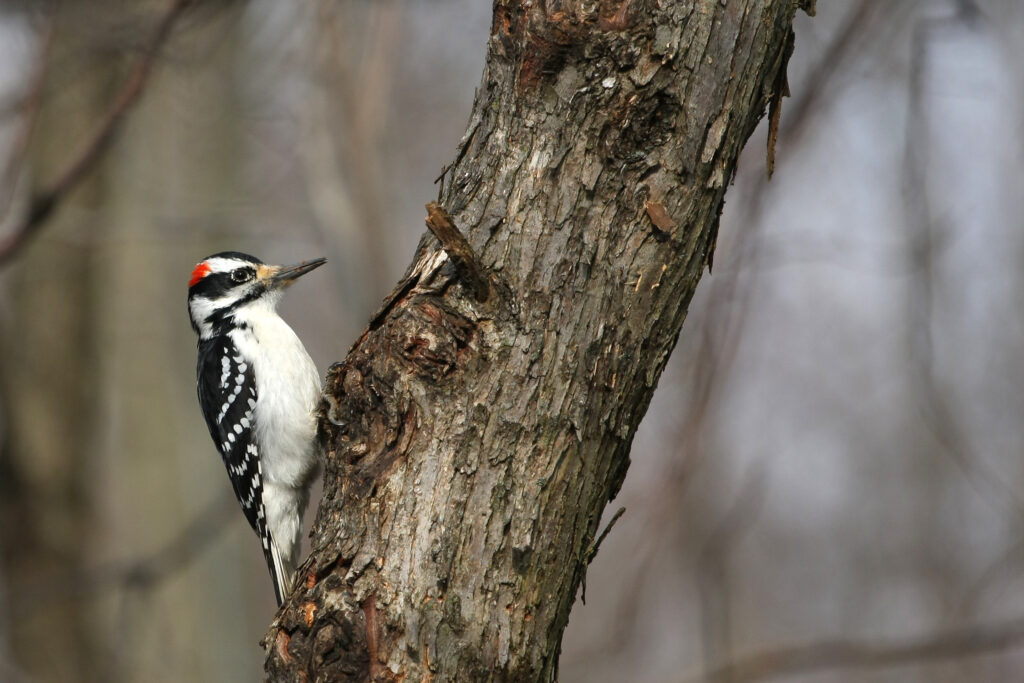
Hairy Woodpeckers have a white stripe down their backs and black wings with the zebra-stripe pattern beneath shoulders at the wing’s outer border. This bird has a somewhat longer, medium-length tail and a pure white belly and breast.
These birds have white faces with a black mustache line, a ‘bandit’ mask, and a black cap that ends in a red dot if they are males. They have black bills that are sturdy, straight, and medium in length.
Length
These birds range from 7.1 to 10.2 inches, with wingspans of 13 to 16.1 inches.
The Hairy Woodpecker is a bird with a big and long beak. The Hairy Woodpecker lives in Michigan and the rest of the United States all year. They are frequently observed at bird feeders. It is conceivable you saw both of them and concluded they were the same species.
Hairy woodpeckers are among the most active and powerful woodpeckers in North America. They are believed to be able to drill deeper into trees in quest of wood-boring bug larvae than most other woodpeckers.
If you witness a hairy woodpecker at work, you’ll note that it rips off enormous chunks of bark and pounds on the tree limb or trunk with its beak ceaselessly.
Habitat & Food
These woodpeckers like wide areas, particularly those with oak and pine trees. They’ve been spotted in the suburbs and even cemeteries, but the best location to look for them is in sections of forests recently burned.
Bark beetles, Wood-boring ants, and moth larvae plucked directly from their cocoons favor these birds.
These birds are a common view and are present in abundance in Michigan throughout the year. These birds don’t tend to migrate and can dwell even in the bitter winters of Michigan. However, exceptionally bitter colds may force them south on a seasonal basis.
In Michigan, hairy woodpeckers may be found all around the state. They may be found almost anyplace as long as there are huge trees to nest in and eat from since they are adaptable.
3. Red-Bellied Woodpecker
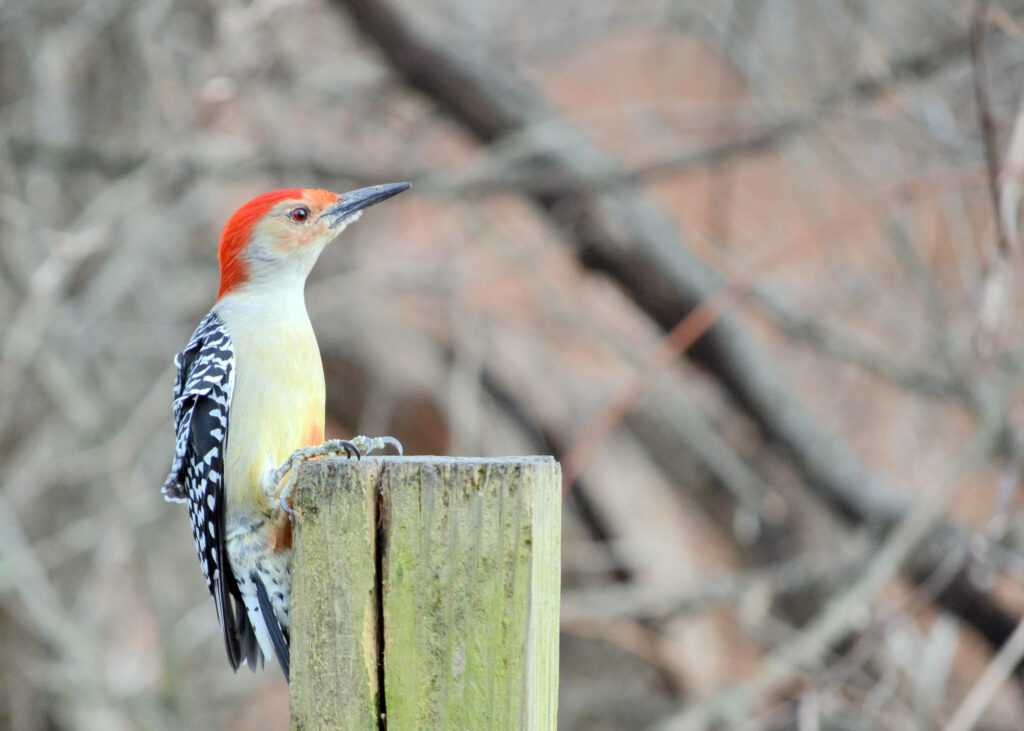
Red-bellied Woodpeckers have zebra-like stripes on their backs, medium-length wings, and medium-length tails that are white on the undersides, giving them an exotic appearance. They have a white belly and chest with a crimson patch on the belly and faint red splashes over the breast.
They have white faces with a splash of light red hue at the cheekbones and a crimson crown that reaches down to the nape of the neck. The bills of these birds are large, robust, and straight.
Length
These birds have wingspans ranging from 13 to 16.5 inches broad and a length of 9.4 inches from tip to tail.
Habitat
These birds like the woodlands, preferring hickory, oak, and pine tree stand. They also frequent backyards, where they are frequently seen at bird feeders.
Food
These Woodpeckers consume fruits, nuts, seeds, and tiny insects, including crickets, ants, bug larvae, and caterpillars, among other things.
In Michigan, you may observe Red-bellied Woodpeckers all year. They are somewhat larger than Downy Woodpeckers and about the same size as Hairy Woodpeckers. Bird feeders, particularly suet feeders, are also known to attract them.
Red-bellied Woodpeckers have a scarlet tummy. However, it’s a pale red that goes unseen until they’ve landed on a tree or feeder.
They love woodland regions and even suburban settlements as their habitat, with the sole requirement being that they prefer deciduous trees.
The red-bellied woodpecker’s range has recently expanded farther north, allowing them to become more common in regions like Michigan.
In Michigan, red-bellied woodpeckers can be found at any time of year. They can be driven south if the weather becomes too cold, although they are not migratory birds. They usually stay for the winter.
The southern portion of the Lower Peninsula is home to the most red-bellied woodpeckers. So, while they aren’t widespread on the Upper Peninsula right now, more sightings are being reported up north as time goes on.
4. Red-Headed Woodpecker
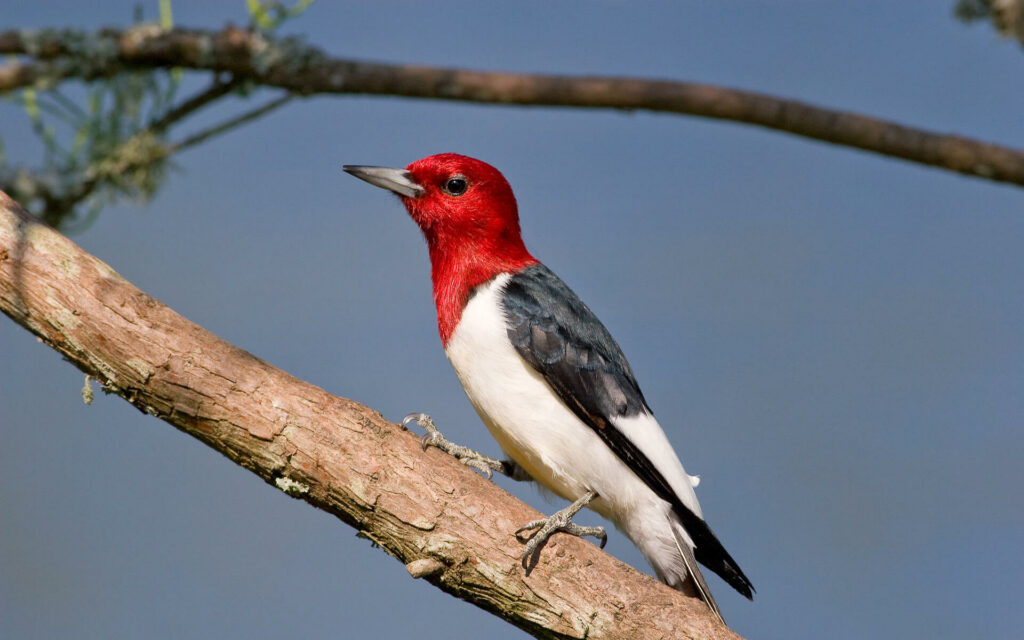
Red-headed Woodpeckers are less prevalent at bird feeders than the first three on our list of Michigan woodpeckers, and their distribution in the state is primarily restricted to nesting.
They have a “winter and breeding” range in southern Michigan, although they are still prevalent in these places. They occasionally observe visiting bird feeders before fleeing up a tree and stashing the sweet snacks in holes or bark for another day.
Habitat & Food
Bees, nuts, and cherries are the main food sources for woodpeckers. Whenever it comes to woodpeckers, they are also regarded as one of the most expert flycatchers, and they will frequently store live insects caught in tree bark for later use. Their bright redheads with black hair make them easy to spot.
The red-headed woodpecker is, without a doubt, one of the gorgeous woodpecker species. With redheads and gorgeous white and black patterning throughout most of their bodies, they’re a sight to behold. Instead of the characteristic red, juveniles have heads of brown color.
Their color blocking, with pure black backs and pure white bellies, and white bottom sections of their feathers that match their belly, distinguish them from other woodpeckers.
They prefer to live in large woods with tall trees and an open, clear ground level. They wander in groups, gathering nuts and hunting insects seen from tree limbs. They are cavity nesters, meaning they store food in their cavities for later consumption.
They were a common view, but their numbers have recently declined. You can see red-headed woodpeckers in Michigan during the winter and mating season. They may be seen all year in the areas south of Michigan.
Only during the breeding season may red-headed woodpeckers be found in the Upper Peninsula and only during the breeding season and winter on the Lower Peninsula. They like orchards and woodlands,
5. Pileated Woodpecker

Pileated Woodpeckers are year-round inhabitants in much of Michigan, although they are less abundant in the southeast. They are the biggest woodpecker species in both Michigan and North America. They quickly consume suet feeders when supplied, much like other woodpeckers, although they can be elusive and difficult to attract.
Habitat & Food
They love to nest in huge trees in old woods and may bore gigantic holes in them. Carpenter ants are their principal meal, although they also consume insect larva, insects, bugs, fruits, and nuts.
If the Ivory-billed Woodpecker is gone, Pileated Woodpeckers are the biggest woodpecker species in North America. They frequent suet feeders, although they are cautious and easily startled by humans.
Pileated woodpeckers adore dead trees and tree stumps, excavating them for nesting and drilling for bugs such as hive beetles, moth caterpillars, and termites. Fruits and nuts are also popular among them. Their large stature and big red Mohawk make them extremely distinctive.
Pileated woodpeckers can be seen in Michigan at any time of year. Pileated woodpeckers may be found across Michigan. However, they are more numerous in the state’s southeastern region.
6. Northern Flicker

Northern Flickers are brightly colored birds that can be seen in backyards all around Michigan. While they come to feeders on occasion, they prefer to consume ants off the ground, which they accomplish by picking through leaves and mud and grabbing with their long tongues.
Habitat & Food
A variety of ground crawlers and insects are their common meals. Besides that, they would also forage on seeds, nuts, and berries.
Even though they forage for food on the ground, they frequently drum on trees to communicate. Like most other woodpeckers, they prefer to build their nests in old, decaying trees. Northern Flickers are distinguished by spotted underbelly, black bibs, redbacks of necks, and yellow tails.
Northern flickers are uncommon in that they seldom hammer away at trees, preferring instead to feed on insects such as ants on the ground.
They feature white underbellies with black spots, yellow-lined tails, and red-tipped heads. They mainly reside in pre-existing cavities in trees or elsewhere since they cannot dig as well as other woodpeckers.
They have a remarkable range and can adapt to a variety of temperatures. A woodpecker species they are bigger than typical. Northern flickers can be seen in Michigan during all the seasons.
When it comes to living, they depict a flexible attitude, dwelling in various environments. Because of their versatility and wide range, northern flickers may be found across Michigan.
7. Yellow-Bellied Sapsucker

Yellow-bellied Sapsuckers aren’t frequent visitors to bird feeders, although they will occasionally visit a suet feeder. When they’re foraging for bugs or harvesting sap, they’re more likely to be observed in tree branches.
Yellow-bellied Sapsuckers have sturdy, straight bills and are little woodpeckers. The large wings reach nearly halfway to the stiff, pointed tail’s tip at repose. Sapsuckers frequently raise their crown feathers to produce a peak at the rear of their heads.
Yellow-bellied Sapsuckers have strikingly patterned faces and are mostly white and black. Red foreheads and necks are present in both sexes. On the folded wing, look for a long white stripe. A dramatic black-and-white line curves from the face around yellow undersides and a black chest.
Yellow-bellied Sapsuckers, like other woodpeckers, sit straight on trees and depend on their tails.
Northern and upper Michigan is home to these woodpeckers. They have a migratory-only range in the southern part of the state. However, they may still be observed during migration seasons. Yellow-bellied Sapsuckers have light underbelly feathers, black and yellow chests, and red fur above and below their beaks.
8. Black-Backed Woodpecker

Males have a golden crown on top of their heads, and black-backed woodpeckers have white undersides. More than other woodpecker species, they will drill into tree branches and limbs for boring fly larvae and prefer to dwell and eat in burned woods.
Instead of digging a new one into a tree for each mating season, they are observed not to use the same nest twice. Black-backed woodpeckers have also considered less fearful and relaxed. These birds have a wingspan of 15.8 to 16.5 inches and a length of 9.1 inches from tip to tail.
Woodpeckers may be found in Montane and Boreal woods, particularly where fires have occurred in recent years. They like to scout for juicy beetles under dead trees and even forested bogs, so look for them there. These birds eat jewel beetle larvae and Long-horned wood-borer.
Their distribution is largely limited to Michigan’s Upper Peninsula, while they are occasionally seen in the Lower Peninsula.
Throughout the year, black-backed woodpeckers may be seen in Michigan. Because their distribution extends considerably further north in Canada, they can readily withstand the frigid Michigan winters.
Black-backed woodpeckers are rarely seen outside of Michigan’s Upper Peninsula, and even then, they are uncommon.
The Black-backed Woodpecker can only be found in the state’s northernmost regions. They may be found year-round over much of upper Michigan, with a small enclave at the state’s northern border near Lake Michigan’s shoreline. They are black with a white underbelly, with males sporting a golden crown.
Wood-boring beetle larvae are the main food source for Black-backed Woodpeckers, which they bore out of trees. They are naturally attracted to burned woods. When they are ready to nest, they will dig a fresh hole. This aids in creating nesting chances for all of the birds who must find a place to lay their eggs.
9. American Three-toed Woodpecker

The American Three-toed Woodpecker has a broad white stripe running down its back and medium-length black wings with white spots, and a medium-length black tail with a white underside.
This bird has a white belly and breast with black barring that resembles zebra stripes on either side and a white face with a black mustache line. This bird has a medium-length black beak and a yellow patch on the forehead, indicating that it is a male.
The American Three-toed Woodpecker is an uncommon sighting in Michigan. Still, unlike many of the other species on this list, it has been discovered that they prefer to be located north of Michigan rather than south. This implies they can withstand colder temperatures and harsher winters than most birds.
A black-and-white woodpecker with a yellow patch on its forehead. The wings have white dots, and the back is black with sloppy white barring. The underparts are white, while the flanks have faint blackish banding.
The face is black, with a small white line beneath the cheek and a white line behind the eye. White outer tail feathers with a few black bands are common. A tiny golden crown patch can be found on both sexes of juveniles.
Length & Habitat
These birds are 8.3 to 9.1 inches long and 14.6 to 15.3 inches broad at the wingspan. These Woodpeckers like to spend their time in woodland regions with dead or burned trees. Coniferous woodlands are also a favorite of theirs.
Food
These Woodpeckers consume worms and other insects that they may catch in addition to the larvae of lumber beetles. They are peaceful birds with a tendency to appear artificial due to their ability to remain completely motionless for lengthy periods. They don’t pound on trees as much as other woodpecker species, preferring to pull off chunks of bark and consume whatever they find.
They tolerate strangers and maintain a calm demeanor even when strangers approach their nest. Their name refers to the fact that they only have three toes instead of the four that other woodpeckers have.
Flakes or scales bark from tree trunks for food, seldom digging deeply into the wood. Before going on, he often spends a long time working on a single tree.
They may be observed in Michigan at any time of year, even though Michigan is officially outside their range. From time to time, a few stragglers will be discovered.
Although these birds are known not to be natives of Michigan, their lower range extends just to the north of the Upper Peninsula, making them visible in the Upper Peninsula.
10. Lewis’s Woodpecker

Lewis’s woodpecker is unique among woodpeckers. Unlike other woodpecker species, Lewis’s woodpecker searches for bugs like a flycatcher, sitting on stems or trees like many others. Rather than probing for invertebrates, they keep an eye out for bugs flying by and chase them down mid-air.
Lewis’s Woodpeckers have the appearance of a woodpecker, the foraging habits of a flycatcher, and the ability to fly like a crow. They cling to trees the same way that woodpeckers do, but they also sit erect on bushes, cables, and posts and fly out in long sorties to catch insects in mid-flight, much like a flycatcher.
In contrast to the bounding flight of other woodpeckers, they fly slowly with deep wing beats and frequent glides.
Even their flight is unlike woodpeckers, with slow flying and forceful wingbeats resembling ravens rather than woodpeckers. They have a dark green back and red face, pink bellies, and a gray ring around their necks. They, like woodpeckers, may drill into trees, albeit they do so seldom.
They are a roving species found in huge pine woods and forests; however, they usually only stay in one location to spawn. Lewis’s woodpecker is an “accidental bird” since it is rarely found near Michigan.
Lewis’s woodpeckers are rarely seen in Michigan, but it’s generally in early summer or late spring when they do. Only a few of these birds have been spotted in Detroit; they are generally located in the western US.
Look for them perched in trees, searching for nuts or flying insects.
Conclusion
A beautiful number of birds have been discussed in this article. We have talked about various woodpeckers that are abundantly present in Michigan. Michigan topography lures many birds and is home to many woodpeckers species.
We have discussed their habitats and whether they are inclined to migrate, and their foraging preferences have also been discussed. Their features have also been discussed, due to which you can easily identify them if they come across you.
FAQ
How many woodpeckers species are the most prevalent in Michigan?
Eight species are common to see in Michigan.
What is the state bird of Michigan?
The American robin is known to be the state bird of Michigan.
Is it normal to spot an American three-toed woodpecker?
No, this specie is an uncommon sighting.
Which woodpeckers are found throughout the year in Michigan?
Hairy woodpeckers can be easily seen all around the year.
Last Updated on March 22, 2023 by Lily Aldrin
